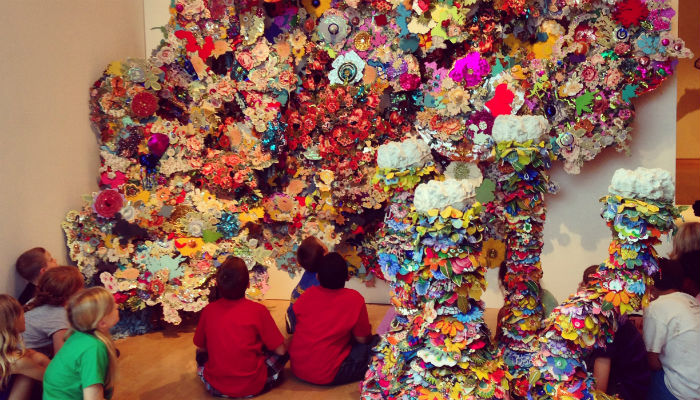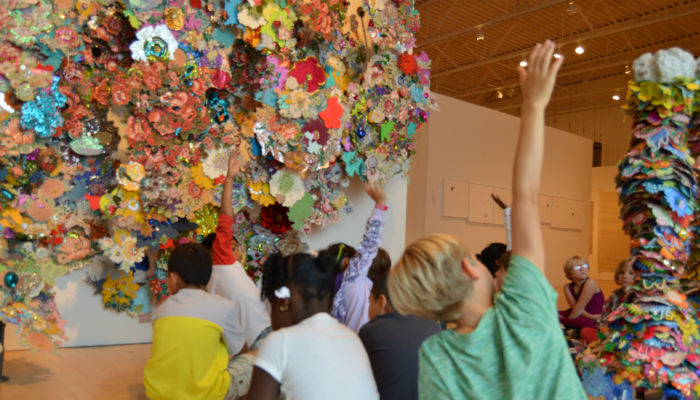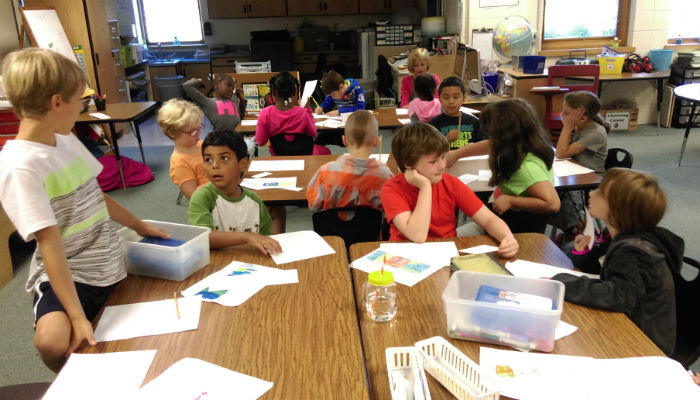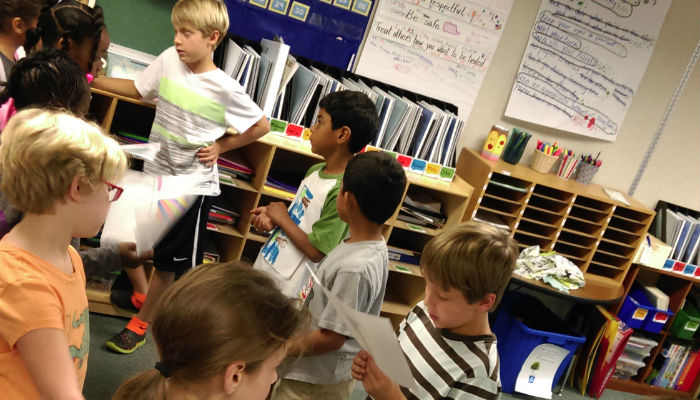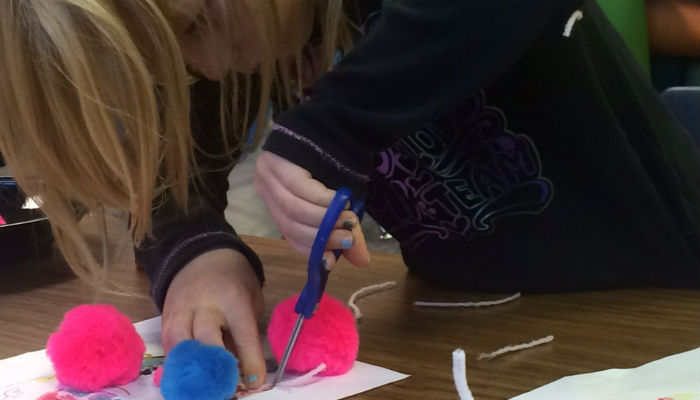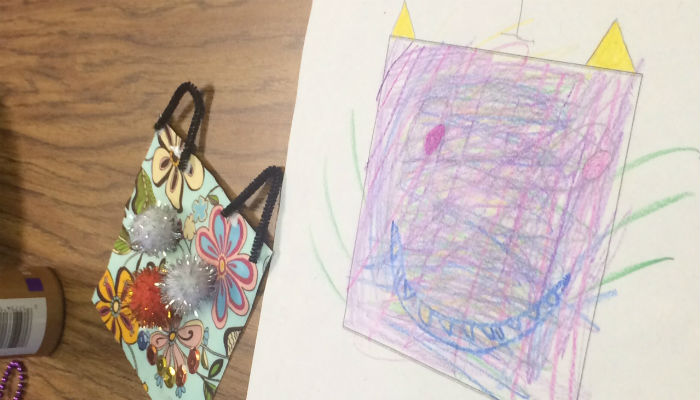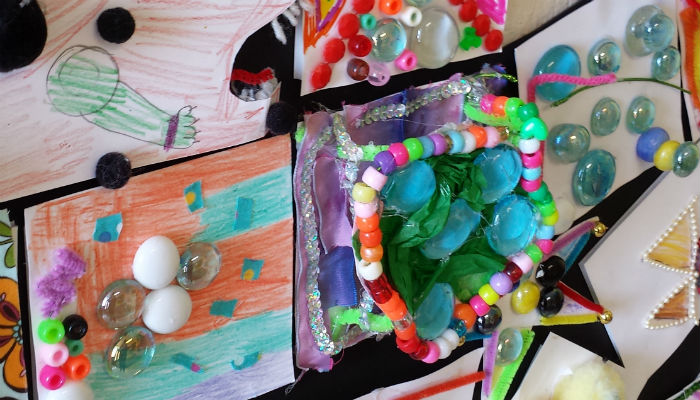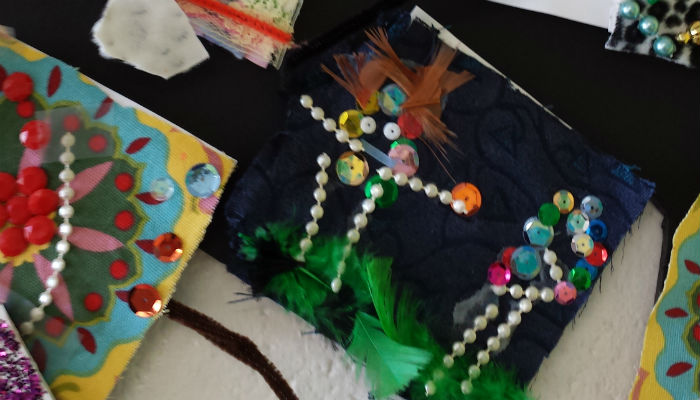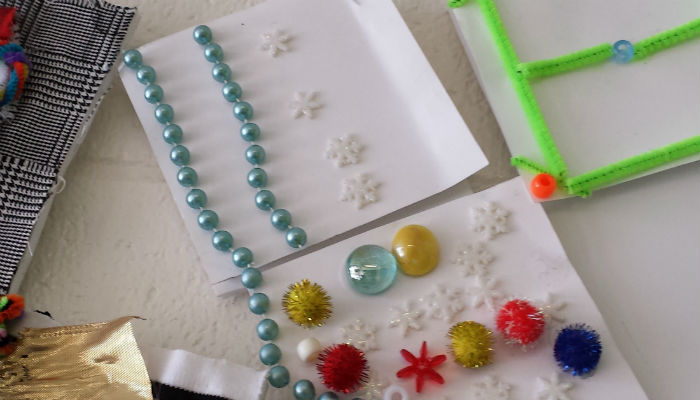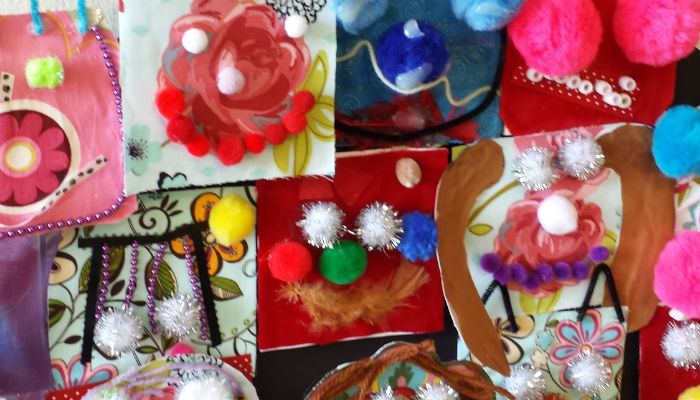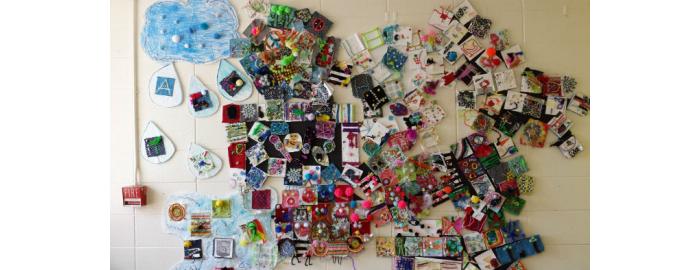
If you have recently gone through Door 8, the door at the very back of the school, you may have noticed a new work of art on the wall. This piece was created by each ESAA student to represent the school as a group of individuals, classrooms and the school community as a whole. This was the first time a school-wide art project has been attempted at ESAA using observations and thinking routines with a professional work of art as inspiration.
On the first week of school, all classes spent time at the John Michael Kohler Arts Center to examine and ponder the bright, eye-catching work entitled, Frosted Pink Lipstick Smeared All Over His Face by Jesse Harrod. Upon entering the main gallery, this piece is impossible to miss when passing through the door. From afar, the cloud of dazzling colors and glitter blooms brightly in the entryway, asking you gingerly to enter. Upon closer inspection, you can find there are many individual pieces, multiple layers, mirrors, patterned fabric and overlapped sections secured on wood panels.
Sitting with this piece, ESAA students and wondering about it with a thinking routine, “See, Think, Puzzle, Explore.” Each class listed details about the piece they noticed, such as the many colors, beads, glitter, overlapped pieces of fabric and patterns. The first graders wondered how long such a piece would take to build and that they would like to ask the artist if they could. The second graders were puzzled why the artist used fabric flowers, how she made it sparkly, and how it could be transported. The classes then explored further: what it might be like to be tiny and be able to physically explore it? The layered landscape of the art reminded some students of the ocean floor or how it might feel to be in the Grand Canyon. Could exploring this piece also mean trying to make something like it ourselves? How could we do it?
To answer these questions, the artful thinking continued back at school. Students began to put their thoughts and insights about colors, shapes and symbols from the piece down on paper as a class. Then, each student mapped out their own symbols and sketched a layout for their individual design. Students also gave and received feedback from their classmates on their designs and shared how their images evolved from the sketches to construction. This meant choosing which colors, shapes, and materials to use and why. Here, they would look back on the thinking routine at JMKAC, instead this time envisioning themselves as the artist, trying to communicate a point of view. What does it mean that am I using the color blue? What do the gold beads symbolize to me? One second grader used snowflakes to show his love of winter and skiing. A first grader thought about what was most important to him and chose to show a summer scene of playing fetch with his dog in the park.
Just as students expressed their individual identities with symbols and colors, they also discussed what this might look like for their classroom. The fourth and fifth graders in Ms. Gauger’s class decided, after voting on several ideas, to arrange their pieces in a spiral, a potent symbol because, like the learning in the classroom, as she notes in her weekly blog, “spirals build on themselves and have no end.” Symbols like these are important not just as happy reminders of things the students like, but also how they see themselves in the classroom and at school.
Next time you are at ESAA, head down the hallway to Door 8 atrium and take a few moments to study the ESAA Community Art Project. Look at it as a whole, then notice how the different sections and individual pieces speak to you. Students put a lot of thought and careful consideration to each how component and layer communicate some aspect of their personality and identity. The finished product is a daily reminder representing the unique voices of the people that come together to make our school community strong and vibrant.

